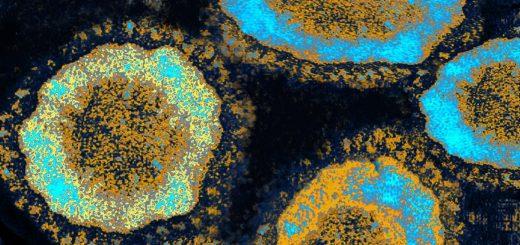It is certainly not an indication of character or emotional strength. Making it far more constructive to focus on dealing with it, rather than looking for the ‘why’.
However, this article provides an overview of an important area of research. One that may hold clues into both susceptibly to PTSD and management of long term symptoms: we’ll answer the question “What is the connection between the hormone cortisol and PTSD?”
This article explains what cortisol does, and some of the areas of scientific interest. Later, it also provides you with ways to balance your levels of cortisol to help manage PTSD.
What is cortisol?
Like many other hormones that regulate your bodily functions, Cortisol is produced by your adrenal glands. These are triangle-shaped entities that sit on top of your kidneys.
You may well have heard of adrenaline, the hormone from the adrenal gland that increases your heart rate, raises your blood pressure and boosts energy production when you engage in thrilling or strenuous activities.
The best way to describe cortisol is that it’s your body’s alarm system. It’s a substance you naturally produce as preparation for dealing with a stressful situation.
Cortisol plays a role in metabolising food, regulating blood pressure, and increasing blood sugars, partially to get additional energy to tackle difficult situations. It also shuts off systems – like your digestion – to focus energy where it’s needed. Cortisol provides anti-inflammatory assistance too, as part of the preparation for any tissue repairs needed.
Your brain signals the adrenal glands if more cortisol is needed, or when it can reset to normal (more on this below).
Levels of cortisol and PTSD
The first point to make is that studies have shown that people diagnosed with severe mental health issues can sometimes have too high levels of this critical hormone.
Having your stress response system activated for a prolonged period can put too much cortisol in your system, for too long. Which is bound to influence your physical and mental health. This can happen due to genetics, or of course life experiences that lead to PTSD.
However, don’t jump to the conclusion there is a clear-cut case that elevated cortisol makes people vulnerable to PTSD and its symptoms. There are also indications that other individuals with mental health conditions such as PTSD have too little!
This suggests that it is an imbalance that can lead to a diverse range of physical and emotional effects. You will see this referred to as a derangement of cortisol levels.
How deranged cortisol levels can affect your body
We will look at low cortisol levels later, but first, what happens if the derangement is creating too much, for too long?
Cortisol is a stress warning to your body, and therefore it heightens alertness and creates fear.
When your brain ‘decides’ to put your body on full alert, the amount of cortisol produced increases. It can alter or even shut down certain functions, to keep you ready for ‘fight or flight’ for example
When the perceived danger is gone, your brain again adjusts the production of cortisol, calming it down and so allowing the rest of your body to ‘reset’ back to normal.
What happens if this ‘calm down’ message is never issued? Your alarm system is switched on around the clock and your body is continuously in stress mode.
This then impacts on your core bodily functions like digestion and sleep. So can see why elevated cortisol can result in significant physical issues too. Including sleep deprivation, digestive issues, migraines and even heart attacks.
You may also have problems with your moods, memory and concentration. As well as anxiety, or conversely depression.
Cushing’s Syndrome and PTSD
Too much cortisol can also be a symptom of a rare condition called Cushing’s Syndrome (also known as hypercortisolism), however, there is no indication that PTSD or severe stress causes Cushing syndrome. It is a physiological ailment.
However, if you have undiagnosed chronic hypercortisolism (Cushing’s Disease) then you are ‘hardwired’ to respond to stress in an extreme way.
This means that some people have symptoms of PTSD which start to reduce immediately after or in the months following surgery to correct this glandular problem.
Too little cortisol
As mentioned above, there are also individuals who produce too little of this hormone as a result of PTSD.
As your body is not getting sufficient quantities of ‘alert’ signals, symptoms include lethargy, low blood pressure, poor appetite and digestion, muscle weakness and changes in your skin, including dark patches.
Yes, people with PTSD can have high levels of cortisol – but some also have low levels – this is why there’s no ‘test’ available for PTSD using cortisol levels.
One study concluded that perhaps in the future that might be possible, with more research into the deficits and developmental issues that result in low cortisol production: “It might be possible, perhaps early in life, to identify individuals with reduced glucocorticoid metabolism who are at increased risk of PTSD and related disorders on exposure to trauma later in life.”
Neuroscientist Dr Rachel Yehuda (director of the traumatic stress studies at Mount Sinai School of Medicine in New York) has even put forward the view that traumatised adults have a lasting biological imprint due to this hormonal imbalance, which can then be passed down as a hereditary susceptibility to their children.
Things you can do to balance cortisol levels
As these deranged levels of cortisol can cause a multitude of physical, and mental symptoms, it would be ideal to be able to get them under control.
This involves taking steps to maintain an even level of cortisol, to help control your physical and emotional responses to triggers. Especially when your ‘reset’ is too slow, after elevated production of this hormone, leaving you on high alert long after the perceived threat has passed!
Here are eight things you can try, to balance cortisol levels, and therefore help alleviate some PTSD symptoms:
- Cut down on caffeine Caffeine stimulates cortisol production, so either switching to decaf or reducing your consumption could help. (Watch out for caffeine in energy and cola drinks too.)
- Make dietary adjustments Reducing the energy kick you get from some forms of sugars can also help balance your hormones. Such as the types of sugars found in white bread, cakes, biscuits, sweets and pastries. Switching to whole grains, starchy vegetables, fruits and high protein foods provides slower-burning forms of energy. Plus, it’s better for your health generally. Eating regularly helps too, so your body doesn’t become stressed by lack of nutrients, or you slip into comfort eating large amounts of food. Both can cause a surge in cortisol production.
- Avoid alcohol and recreational drugs This is especially true when you are stressed, as even in small amounts, mind-altering substances can interact with cortisol levels to suppress your mood or build your stress levels higher.
- Stay hydrated Drinking plenty of water during the day avoids a potential internal stress signal that triggers more cortisol.
- Aim for regular sleep patterns Sleep and PTSD are problematic – so we know this is much easier said than done. We’ve a few articles on our website about how to fall asleep in under one minute, how weighted blankets can help sleep, and how to reduce nightmares which might help.
- Moderate your exercise Intense exercise and strenuous activities over a prolonged period can actually boost your body’s production of cortisol. If you think this may be a factor – such as your stress levels are worse, not better, after exercise, then try switching to something more moderate.
- Try relaxation therapies Journaling, meditation, yoga and other options to create a relaxed state, can help indicate to your brain that it can ‘wind down’ cortisol levels. Time with friends and family, feeling comfortable and loved, can also help with this.
- Have fun! This may sound a strange suggestion, but studies have shown that a 15-20 minute belly laugh can significantly reduce your cortisol level! A great excuse to watch your favourite comedy film again.
It’s important to note, that while choosing your PTSD recovery path you need to address both the symptoms and the underlying condition. NICE guidance updated in 2018 recommends the use of trauma focused psychological treatments for Post Traumatic Stress Disorder in adults, specifically the use of Eye Movement Desensitisation Reprocessing (EMDR) and trauma focused cognitive behavioural therapy (CBT).
Please remember, these aren’t meant to be medical recommendations, but they’re tactics that have worked for others and might work for you, too. Be sure to work with a professional to find the best methods for you.













